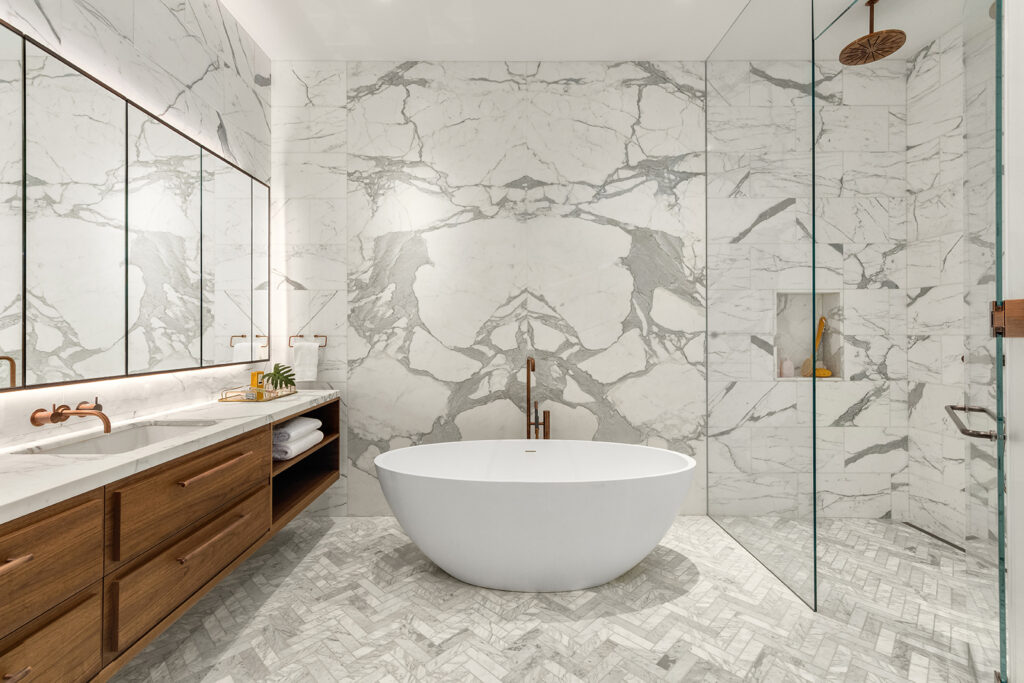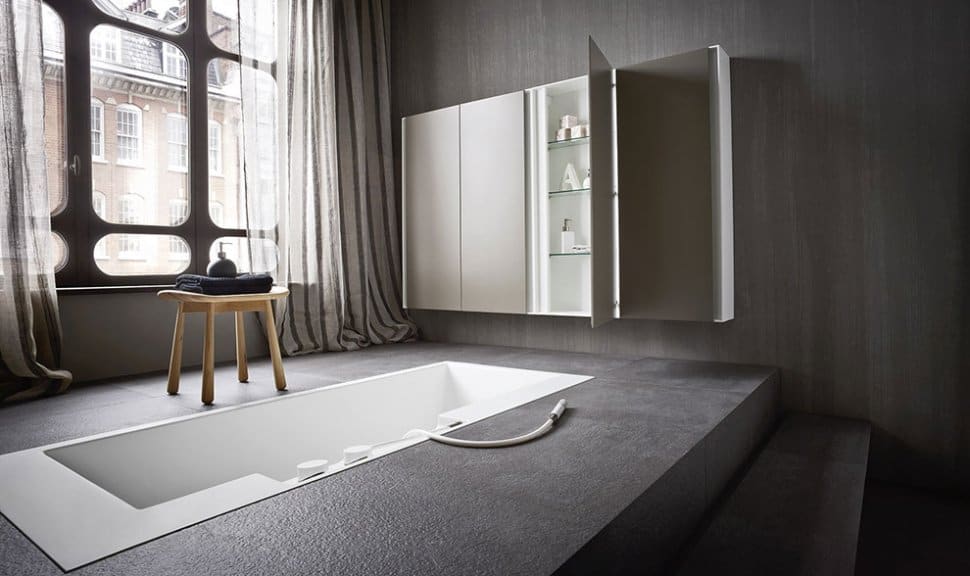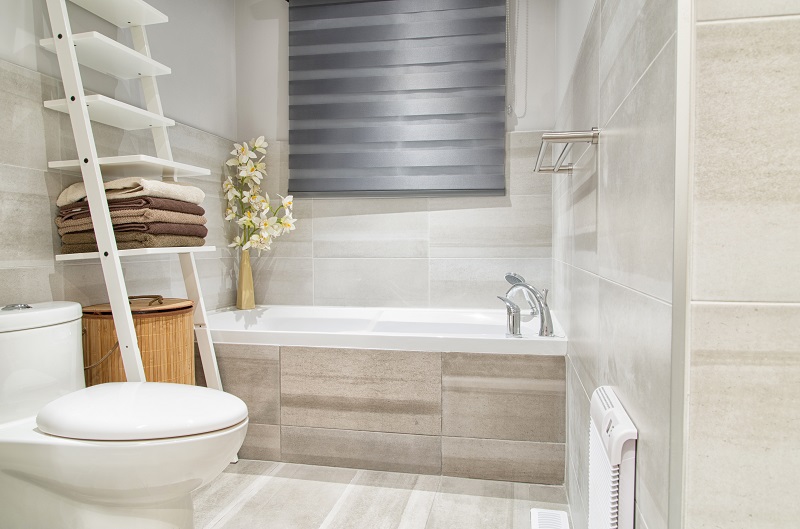The Best Placement Tips and Considerations When Choosing a Freestanding Tub Faucet 2025
Choosing the right freestanding tub faucet isn’t just about style—it’s also about placement. A poorly positioned faucet can lead to
Choosing the right freestanding tub faucet isn’t just about style—it’s also about placement. A poorly positioned faucet can lead to inconvenience, awkward reach, plumbing complications, and even safety hazards. The right location, on the other hand, ensures a seamless bathing experience that’s as beautiful as it is functional. Whether you’re designing a new bathroom or upgrading your current tub area, faucet placement should be a key part of your plan. This guide breaks down the most common installation options, essential placement tips, and questions to help you make the best decision.
With placement playing such a vital role, let’s explore the three most common ways to install a freestanding tub faucet. Each method offers different advantages depending on your bathroom’s layout, plumbing accessibility, and design goals.
Understanding your placement options is essential before choosing a faucet. These three methods—floor-mounted, wall-mounted, and deck-mounted—are the most popular choices, each offering a unique blend of style, installation complexity, and usability.
A floor-mounted tub filler is installed directly into the floor and stands independently next to the freestanding tub. This option offers the most visual impact and is commonly seen in luxury or spa-style bathrooms.
Benefits:
Floor-mounted faucets offer maximum placement flexibility, making them ideal for tubs positioned away from walls or in the center of the room. They work especially well with oval or circular tubs and allow for symmetrical placement, which enhances the overall design. This type of faucet also gives the space a more open, airy feel.
Drawbacks:
Installation can be complex and expensive since it involves running water supply lines through the floor—challenging for slab or concrete foundations. If not placed strategically, it may obstruct walkways or become a tripping hazard.
Example:
Imagine a deep soaking tub centered beneath a skylight. A sleek, chrome floor-mounted filler is placed at the foot of the tub, allowing an unobstructed view and seamless flow. However, the contractor had to route plumbing through the joists, adding $800 in labor costs—something that could have been avoided with earlier planning.

A wall-mounted faucet is installed directly on the wall next to the tub. This setup is perfect for tubs located against or near a bathroom wall and offers a minimalist, space-saving option.
Benefits:
This type of faucet saves valuable floor space and makes cleaning easier by removing obstacles from the ground. It’s also one of the most practical options for renovations, as plumbing is typically more accessible through the wall. Great for compact bathrooms or corner tubs.
Drawbacks:
Wall-mounted faucets limit your flexibility when it comes to tub placement. Tubs must be installed close to the wall, and if the spout isn’t long enough, it may not reach into deeper tubs. Aesthetic appeal may also be reduced if the faucet looks cramped between the wall and tub.
Example:
In a small guest bathroom, a slipper-style tub sits a few inches from a tiled wall. A matte black wall-mounted faucet with a long spout perfectly extends into the tub. The homeowner saved on plumbing costs, but they were restricted to a fixed location for the tub due to existing plumbing lines.

A deck-mounted faucet is installed on the rim or integrated platform of the tub itself. This option is typically available only if the tub is designed with a wide enough ledge or a built-in mounting surface.
Benefits:
These faucets offer a compact and streamlined solution that places the spout close to the water source, minimizing splash. They’re often easier to install if plumbing is routed through or beneath the tub and can provide a cohesive look when matched with the tub finish.
Drawbacks:
Not all freestanding tubs support deck mounting. Repairs can be more complicated, especially if internal access is limited. Also, the faucet style is constrained by the design of the tub rim.
Example:
A modern acrylic tub with a built-in deck area is paired with a brushed nickel faucet that blends beautifully with the tub’s finish. Because the plumbing was integrated into the tub shell, installation was quick and cost-effective. However, when the faucet cartridge failed after a year, the homeowner had to partially unbolt the tub for access—highlighting one of the key drawbacks.
Once you’ve chosen your general faucet type—floor-mounted, wall-mounted, or deck-mounted—the next step is deciding where and how to place it. The following tips will help you avoid common mistakes and make the most of your space, functionality, and overall design.

Before you commit to drilling into floors or rerouting plumbing, make sure you’ve considered the key elements that affect faucet placement. From technical constraints to aesthetic harmony, these tips will help ensure your tub filler works perfectly with your space—now and in the future.
Positioning your faucet near the drain is a practical and time-tested approach. It minimizes splashing, directs water into the deepest part of the tub, and ensures quicker filling. This location also reduces the chance of water pooling unevenly across the surface. In some designs, placing the filler at the foot of the tub aligns perfectly with the drain, offering both form and function.
Keep the faucet clear of areas where people walk to avoid tripping hazards or accidental bumps. Freestanding fillers can be tall and slender, making them vulnerable in tight spaces. If placed too close to the tub entry or bathroom doorway, they can disrupt the natural flow of movement. Always visualize the walking paths in your bathroom and tuck the filler away from those zones.
Each tub filler has a defined spout reach—how far it extends from its base into the tub. It’s crucial that the spout easily clears the tub’s edge without splashing outside or falling short. This becomes especially important with deeper or wider tubs. Double-check the manufacturer’s specifications to confirm the faucet’s reach is compatible with your chosen tub style.
Plumbing access can dictate faucet placement more than design preferences. For floor-mounted faucets, the plumbing must run below the floor, which isn’t always feasible with slab foundations or joist-filled subfloors. Moving water lines could dramatically increase project costs. A plumber can help assess realistic options and may recommend simpler wall-mounted solutions based on your bathroom’s existing infrastructure.
Freestanding tubs vary widely in rim thickness and overall wall construction. A tub with an extra-wide or insulated rim may require a longer spout or a differently angled faucet. Standard fillers might not be sufficient for thicker acrylic or stone tubs. Always measure your tub’s rim before choosing a faucet to avoid installation complications or awkward water flow.
Faucet placement contributes to the overall symmetry and design of your bathroom. A poorly positioned filler can look off-center or cluttered, especially in minimalist spaces. Aim to align the faucet with architectural focal points like windows, mirrors, or lighting fixtures. This creates a sense of intentional design and draws the eye toward the tub area in a visually pleasing way.
Accessibility is key when it comes to plumbing fixtures. If the faucet is boxed into a tight space or too close to a wall or tub, future repairs may require dismantling sections of your bathroom. Leave enough clearance around the faucet for a plumber to remove or service it if needed. It’s a small detail that can save you major hassle later on.
The angle and trajectory of the water stream matter more than you might think. If the spout points too vertically, the water could splash against the opposite wall of the tub. Too low, and it may not provide a clean pour. Before finalizing placement, use a temporary setup (like a hose) to simulate water flow and make sure it enters the tub smoothly without bouncing or overshooting.
Freestanding faucets vary in height, and your tub’s profile should help determine the ideal elevation. If the spout is too low, it may not clear the tub rim or could make filling awkward. Conversely, overly tall fixtures can feel out of scale or be visually overpowering. Measure your tub’s height and look for a faucet designed to complement it proportionally.
The faucet’s shape should echo the style of your tub for a cohesive look. For example, a tub with clean, angular lines pairs well with square or modern filler designs. On the other hand, a curved spout complements a round or clawfoot tub beautifully. This alignment of form enhances the visual unity of your bathroom and makes the faucet feel like a natural extension of the tub.
Even with all the technical tips in mind, a few personal and practical questions can help narrow down your decision further. Here are five key questions to ask yourself before finalizing your faucet placement.
Before you commit to any specific faucet placement, it’s important to think through how your tub filler will interact with your space, plumbing, and lifestyle. These five key questions will help guide your decision and ensure a practical and stylish outcome.
Understanding your existing plumbing setup is often the first and most important step. If your plumbing lines are located beneath a concrete slab or joists, it may limit your ability to install a floor-mounted faucet without major modifications. Rerouting plumbing can increase project costs and complexity significantly. A wall-mounted option may be a more cost-effective and straightforward choice in these cases. Before finalizing any design, consult with a licensed plumber to assess feasibility based on your home’s structure.
Your design goals will help determine whether your tub filler should stand out or blend in. A tall, sculptural floor-mounted faucet can act as a centerpiece, adding dramatic flair to the bathroom. On the other hand, a wall-mounted or deck-mounted filler can deliver functionality without drawing much visual attention. Consider the overall design theme—if your bathroom is minimalist, a subtle faucet may be ideal. But in a more luxurious or spa-like space, a bold fixture might enhance the ambiance.
The primary users of the tub should influence your faucet placement and height. For example, if young children will be using the tub, you’ll want to avoid installing the filler in a location that can be easily bumped or splashed. If the tub will be used by older adults, accessibility and ease of operation become key concerns. In these cases, placing the faucet closer to the entry side of the tub—or using a lower, easier-to-reach design—can make all the difference in usability and safety.
The geometry of your tub plays a big role in optimal faucet placement. A symmetrical tub, like an oval or round soaking tub, often looks best with the faucet centered at one end or directly in the middle. In contrast, slipper tubs or asymmetrical designs may call for the filler to be positioned off-center for both visual harmony and practicality. Additionally, deeper or wider tubs might require a faucet with extended reach or adjustable flow control to fill efficiently.
Your faucet should not only function well—it should also match the aesthetic of your bathroom. If you’re going for a modern, minimalist vibe, a sleek matte black or brushed nickel wall-mounted filler may be ideal. For vintage or farmhouse styles, consider a classic cross-handle floor-mounted fixture with a polished brass or oil-rubbed bronze finish. Matching your faucet to the room’s hardware, tile, and tub shape ensures a cohesive, polished design that feels intentional and elevated.
Choosing the right placement for your freestanding tub filler faucet is crucial for both functionality and aesthetics. You’ll want to avoid common pitfalls like putting the faucet in a walkway, installing it out of reach, or creating costly plumbing challenges. Always consult with a plumber before finalizing your decision—especially if you’re working with a concrete subfloor or limited plumbing access.
By considering both technical factors and lifestyle needs, you’ll be better equipped to make a confident, lasting choice. Let’s wrap up with a quick reminder of why thoughtful faucet placement matters so much.
Whether you opt for a Kingston Brass floor-mounted filler or a sleek wall-mounted fixture, the right faucet can enhance your freestanding tub’s visual appeal and ease of use. With smart planning and thoughtful placement, you can enjoy a luxurious bathing experience for years to come.

Free material samples and tub templates
Choosing the right freestanding tub faucet isn’t just about style—it’s also about placement. A poorly positioned faucet can lead to

If you’re looking to create a spa-like atmosphere in your bathroom, a sunken bathtub might be the luxurious upgrade you

When you’re searching for the right tub, you will find that there are two main types to choose from: alcove

Shopping for a new bathtub can feel overwhelming, especially with so many styles and options to choose from. If you’re
Request your free material sample below. By submitting, you agree to receive occasional product updates and offers from Badeloft. Unsubscribe anytime.
"*" indicates required fields
"*" indicates required fields
"*" indicates required fields